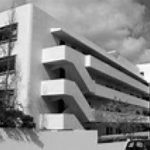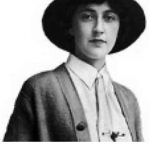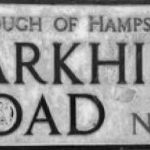Former BRA Chair and local history expert, Averil Nottage, writes:
Between the mid 1930s and mid 1940s seven Soviet spies lived in the Lawn Road Flats, (now known as Isokon), and many others lived nearby. Who were these spies and what brought them to the area?
 From 1933 the rise of Fascism and suppression of workers’ movements in Germany and Austria led many active Communist Party members to flee their homelands, bringing little but their political passions with them. They gravitated to areas where their views might be received sympathetically. Soviet intelligence agencies targeted these political exiles to set up their spy networks in Britain.
From 1933 the rise of Fascism and suppression of workers’ movements in Germany and Austria led many active Communist Party members to flee their homelands, bringing little but their political passions with them. They gravitated to areas where their views might be received sympathetically. Soviet intelligence agencies targeted these political exiles to set up their spy networks in Britain.
The Lawn Road Flats, opened in 1934, were very different from the accommodation otherwise available in local Victorian houses. This sleek Modernist block was designed as an experiment in minimalist urban living. The 32 compact “ready to live in” flats had built-in furniture and all services provided. Intended for young professional with few belongings, they were also perfect for refugees. Jack and Molly Pritchard, who owned the flats, were very sympathetic to the exiles, renting vacant flats to them free of charge and helping with introductions and employment.
Jack Pritchard innocently commissioned Edith Tudor-Hart to photograph the construction of the Flats. Edith, who had a studio on Haverstock Hill, was an active member of the Austrian Communist Party and worked for Soviet Intelligence. In 1934 she introduced Arnold Deutsch and his wife to the Pritchards and helped them move into the Lawn Road Flats.

Ursula Kuczynski, or Agent Sonya.
Deutsch arrived in London to establish a Soviet spy network. He focused on Oxford and Cambridge University students with communist sympathies who were likely to reach the upper echelons of government and the civil service. He was one of the most successful Soviet spies then living in London and recruited more than 20 agents including the “Cambridge Five”. Edith Tudor-Hart introduced him to Kim Philby who she knew from Vienna. At the height of his clandestine career Philby rose to be the Head of M16 whilst also a KGB spy. Deutsch was recalled to Moscow in 1937 after some slipups and then side-lined.
Meanwhile in 1933 Robert Kuczynski, a rich and influential German-Jewish-communist exile, moved into a flat at 12 Lawn Road. Most of his family, who gradually joined him there, worked for Soviet intelligence. In 1936 Brigitte, a talented secret agent, moved into Lawn Road Flats after marrying a British communist, Anthony Lewis. In the same year her brother Jurgen arrived in London to reactivate the German communist party in Britain, living at 36 Upper Park Road. As a well-respected government statistician, he had many influential friends. Brigitte’s sister Ursula, codenamed Sonya, was sent to Switzerland by Soviet Intelligence to establish a small group of anti-Fascist activists prepared to work inside Germany. Brigitte briefed new recruits in the Lawn Road Flats’ restaurant, the Isobar, before they travelled to Switzerland. In 1942 Jurgen and Ursula recruited Klaus Fuchs, the spy who revealed British atomic bomb programme secrets. After the war they both returned to East Germany.
 The Lawn Road Flats offered the perfect camouflage for well-educated and charming Soviet spies who blended seamlessly into the atmosphere of middle-class respectability. The site layout made it hard for the intelligence services to keep track of visitors once they had entered the building. German and Austrian spies worked quite separately as they came from different Marxist traditions and linked to rival Soviet secret service agencies. So, spies who were near neighbours may not have known about each other’s activities.
The Lawn Road Flats offered the perfect camouflage for well-educated and charming Soviet spies who blended seamlessly into the atmosphere of middle-class respectability. The site layout made it hard for the intelligence services to keep track of visitors once they had entered the building. German and Austrian spies worked quite separately as they came from different Marxist traditions and linked to rival Soviet secret service agencies. So, spies who were near neighbours may not have known about each other’s activities.
As well as the Lawn Road Flats, MI5 also monitored other local locations. In 1938 Jurgen Kuczynski helped to establish the Free German Cultural League at 36 Upper Park Road “to provide a social and cultural centre for refugees and a platform for refugee artists”. MI5 was not convinced and saw it as “politics by other means”. They also identified Edith Tudor-Harts studio as “a rendezvous of persons interested in communist matters”.
